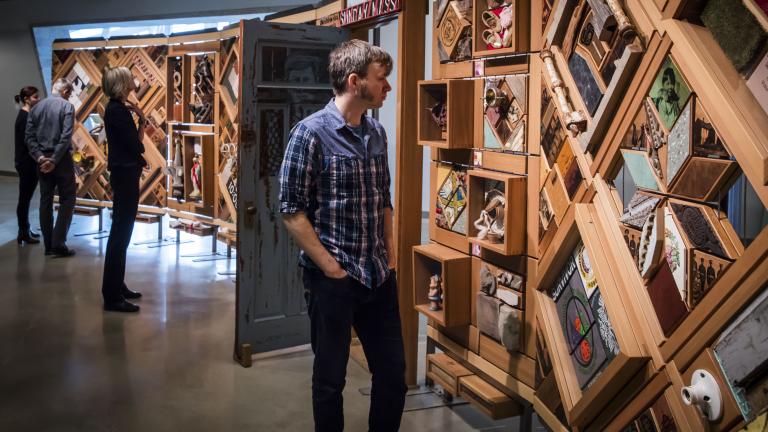This release is more than two years old
This release is more than two years old. For additional information, please contact Amanda Gaudes from our Media Relations team.
News release details
A battered shoe. Braids of hair. A hockey trophy. A wooden door. A black‐and‐white photograph. A piece of stained glass.
They are silent witnesses to the Indian residential schools era (1870–1996). Together with 800 other objects collected from 77 sites all across Canada, they have been given a voice in a 12‐metre‐long artwork created by artist Carey Newman as a national monument to the children.
The Witness Blanket was officially opened today as an exhibition in the Canadian Museum for Human Rights (CMHR), on the eve of the submission in Ottawa of the historic final report by the Truth and Reconciliation Commission (TRC). The Museum hosts the exhibition until the end of June 2016.
“As a national museum devoted to human rights education, we commit to playing a role in reconciliation,” CMHR president and CEO John Young said at a news conference held today in the Museum with the artist and residential school survivors. “This powerful piece is one of several exhibits and programs in our museum that can educate visitors about the legacy of residential schools in order to facilitate empathy, encourage mutual respect, and foster a desire for reconciliation.”
In its summary report, the TRC made specific reference to the CMHR and other national museums as places to promote reconciliation through education (page 300).
Newman, whose father is a residential school survivor, said he made The Witness Blanket for people who want to learn and are ready to work towards a better future together. He and his team spent over a year travelling 200,000 kilometres around the country to gather objects and stories. A documentary film about the project has just been completed. An eight‐minute version plays in the CMHR with the exhibition.
“I created this monument to reflect the strength of my people, and it is my hope that everyone who stands in witness of this piece will be affected in some way,” said Newman (Ha‐Yalth‐Kin‐Geme), a First Nations artist and master carver from Vancouver Island. “If The Witness Blanket fosters awareness in one person who is just learning about this difficult part of Canadian history, or touches a residential school survivor or one of their family members, it has made a difference.”
The art installation consists of cedar frames supporting hundreds of objects, explained through a unique mobile app that visitors download to their iOS devices (or borrow a loaded device in gallery). A door reclaimed from St. Michaels Residential School in Alert Bay, B.C. is left open, allowing visitors to pass through the display to a multi‐media presentation on the other side. The CMHR has also developed a “Reflection Wall” where visitors can share their own thoughts and add them to a word collage that resembles the Blanket, in gallery or online.
-30‐
This release is more than two years old
This release is more than two years old. For additional information, please contact Amanda Gaudes from our Media Relations team.
